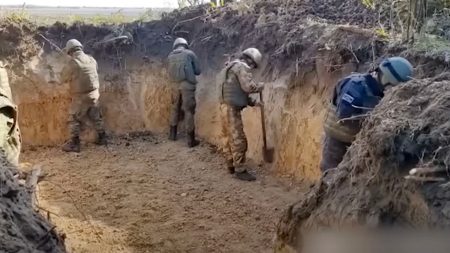In a striking act of defiance against Iran’s stringent hijab laws, a woman at Tehran’s Mehrabad airport confronted a cleric who berated her for not wearing a headscarf. The incident, captured on video, unfolded in the airport lounge where the woman, clad in a striped top and dungarees, was searching for her husband. The cleric initiated a heated exchange, criticizing her attire. In a swift and audacious move, the woman snatched the cleric’s turban, unraveling it before wrapping it around her own head as a makeshift headscarf. Her actions, punctuated by a vocal condemnation of Iranian men, drew the attention of onlookers and quickly escalated into a viral symbol of protest against the regime’s oppressive policies towards women.
Following the altercation, the woman was apprehended by Islamic Revolutionary Guard Corps (IRGC) officers. While Mashregh News, a media outlet generally supportive of the IRGC, reported that she was accused of having “psychological issues,” she was subsequently released with the consent of the complainants. The incident ignited widespread support online, with many lauding her actions as a powerful protest performance and highlighting the constant pressure faced by women in Iran under the restrictive dress code. Comments online emphasized the difficulty men have in comprehending the daily struggles women face under such regulations, often dismissing their protests as signs of mental instability.
The airport incident comes amidst growing tensions surrounding women’s rights in Iran. A new bill, yet to be formally passed, aims to further tighten restrictions on women’s dress in public, threatening arrest and judicial action for those deemed to be wearing “improper” clothing. Penalties could include travel bans and social media restrictions. Despite its unofficial status, reports suggest that the law is already being enforced, adding to the existing pressures faced by women. The incident at the airport appears to be the latest manifestation of increasing resistance against these oppressive measures.
This growing defiance echoes the nationwide protests sparked by the death of Mahsa Amini in 2022. Amini’s death in the custody of the morality police, after being arrested for allegedly violating hijab rules, ignited a “headscarf revolution” across Iran. Women took to the streets, removing their hijabs in public displays of protest against the regime. The demonstrations were met with a brutal crackdown, resulting in hundreds of deaths and thousands of arrests. Reports of torture and extrajudicial killings further fueled public outrage and international condemnation.
The morality police, formally known as the Guidance Patrol, play a central role in enforcing Iran’s strict dress code for women, derived from interpretations of Sharia law. Patrolling public spaces in vans, they target women deemed to be in violation of the conservative dress code. Detentions can range from warnings to arrests, with women often taken to “correctional facilities” or police stations for lectures on appropriate attire before being released to male relatives. Since the 1980s, the morality police have been implicated in numerous instances of violence against women, including beatings and even deaths.
Recent months have seen a surge in reports and video footage documenting the intensified presence and violent tactics of the morality police. Disturbing videos have emerged showing women being forcibly apprehended and thrown into patrol vans, physically assaulted in public for not covering their hair, and targeted for wearing jeans. The “Nour Project,” launched in April, has further escalated the crackdown on perceived violations of religious rules, with reports of sexual harassment, beatings, arrests, and the use of tasers against women. The airport confrontation underscores the ongoing struggle for women’s rights in Iran and the growing resistance against the regime’s oppressive policies.











